This
post was originally published on
this sitehttp://chriskresser.com/
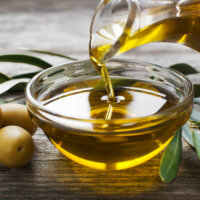
Fats, in general, get a bad rap in our heart-healthy and fat-obsessed diet culture. For years, we’ve been trained to put foods containing fat (and fat itself) in the “avoid” category, even if the alternative is sugar laden and artificially flavored. (A homemade chocolate chip cookie will likely do less damage than its phony fat-free counterpart.) Yet the right fats are important for supporting immune function, insulating internal organs, regulating body temperature, maintaining healthy skin and hair, and aiding in the absorption of the fat-soluble vitamins (A, D, E, and K), among other crucial functions.
Fats are also a primary energy source for the body, and several types of fats are essential for survival. In this article, I’ll review everything you need to know about healthy fats, including the different types of fats, how they benefit our bodies, and the best dietary sources.
Short on time? Use these links to jump ahead to a specific section.
An Introduction to the Different Types of Fats
Fat is one of the three main macronutrients (along with carbohydrate and protein) that our bodies need to function and survive.
Fats, also referred to as lipids, consist primarily of carbon and hydrogen atoms, which may or may not be connected by what scientists call a double bond. This bit of chemistry is worth knowing because, based on the chemical configuration of these atoms, fats are typically grouped into three major categories:
- Saturated fats
- Monounsaturated fats
- Polyunsaturated fats
Every food that contains fats has varying percentages of all three of these types. Some foods also contain trans fats, a fourth type that can be either naturally occurring or artificially made. Let’s look at each type more closely.
Saturated Fats
Saturated fats have no double bonds between carbon atoms—their carbons are completely saturated with hydrogen atoms—which results in a very straight structure that allows molecules to pack together very tightly. This is why most saturated fats, like butter and lard, are solid at room temperature. This property also makes many saturated fats great cooking fats because they are not prone to the oxidative damage that occurs with high-heat cooking.
Saturated fats are further classified based on their length.
Long-chain saturated fats (like myristic, palmitic, and stearic acid) are found mostly in the milk and meat of ruminant (grazing) animals like cattle and sheep. They form the core structural fats in the human body, making up 75 to 80 percent of fatty acids in most cells, and they’re the primary storage form of energy. (1) In other words, when the body stores excess energy from food for later use, it primarily stores it as long-chain saturated fat.
Medium-chain saturated fats (like lauric, capric, caprylic, and caproic acid) are found in coconut milk and breast milk. These fats are metabolized differently than long-chain saturated fats: they don’t require bile acids for digestion and they pass directly to the liver via the portal vein. This makes medium-chain saturated fats a great source of digestible energy. Some medium-chain saturated fats, such as lauric acid, have antibacterial, antiviral, and antioxidant properties. (2) This type of fat is also shown to enhance fat burning (by thermogenesis) and result in the formation of ketones, one of two substances (along with glucose) that the brain can use as fuel. (3) (Note: Medium-chain fats are also sometimes called MCTs—medium-chain triglycerides—as in MCT oil.)
Short-chain saturated fats (like butyric, propionic, and acetic acid) are more commonly known as short-chain fatty acids (SCFAs). These are uncommon in the human diet, though small amounts of butyric acid, or butyrate, are found in butter and ghee. Instead, they are formed when certain beneficial gut bacteria ferment dietary fiber in the colon. These short-chain saturated fats have important signaling roles (allowing cells to exchange information), and butyrate is a source of energy for the cells that line the gut. (4)
Monounsaturated Fats
Monounsaturated fats have a single double bond in their structure—they are unsaturated at only one carbon position. This makes them have a single kink in their structure, which is enough to usually make them liquid at room temperature. However, that double bond is also more susceptible to oxidation—being damaged from exposure to light, heat, and oxygen.
Monounsaturated fats, such as oleic acid, are found primarily in olives, avocados, some meats, and certain nuts, like macadamias. Like saturated fats, monounsaturated fats form the core structural fats of the body and are non-toxic even at high doses. Interestingly, monounsaturated fats seem to be the only fats that typically fat-phobic groups, like the American Heart Association, and fat-friendly groups, like the Atkins diet organization and other low-carb groups, can agree are completely healthy.
Monounsaturated fats are known for their beneficial effects on cardiovascular disease risk markers. They have been shown to reduce LDL and triglycerides and increase HDL, decrease oxidized LDL, reduce inflammation, and lower blood pressure, and they may reduce the incidence of heart disease. (5)
Polyunsaturated Fats
Polyunsaturated fats have multiple double bonds in their structure—they are unsaturated at many positions along the chain. This results in several kinks in their structure, which prevents them from packing tightly together and ensures that they are always liquid at room temperature. Polyunsaturated fats are the most susceptible to oxidative damage during high-heat cooking. (6)
Polyunsaturated fats play both a structural and regulatory role in the body. They help form cell membranes, regulate gene expression, and aid in cell function. Polyunsaturated fatty acids are further classified based on the location of their carbon–carbon double bonds. The two major types are:
- Omega-3 fatty acids, which have their first double bond at the third carbon
- Omega-6 fatty acids, which have their first double bond at the sixth carbon
This may not seem like a big difference, but as a result of their different molecular structures, these fatty acids have very distinct functions within the body.
Omega-6 Fatty Acids
There are six different omega-6 fats. For now, we’ll just get to know the two major omega-6 fatty acids.
Linoleic acid (LA) is the shortest omega-6 fatty acid and is referred to as “essential” (as in “essential fatty acid”) because it cannot be produced by the body—it must be obtained from the diet. LA is found in small or moderate amounts in a wide variety of foods, including fruits, vegetables, cereal grains, and meat, but it is present in large amounts in industrially processed and refined oils, like soybean, cottonseed, corn, safflower, and sunflower. These oils are ubiquitous in the modern diet, present in everything from salad dressing to chips and crackers to restaurant food. LA is also relatively high in most nuts and in all poultry, especially in dark meat with skin.
Excess LA has been shown to cause vitamin E depletion, gut dysbiosis, and inflammation, as well as contribute to weight gain, liver disease, cancer, autoimmune disease, and premature aging. (7)
Arachidonic acid (ARA) is a longer-chain omega-6 fat that can be produced in our bodies using LA. It is also found in animal foods like chicken, eggs, beef, and pork because animals are also capable of making this conversion.
ARA is present in cell membranes and involved in cellular signaling (aiding cells in exchanging information), and it can also act as a vasodilator (relaxing the blood vessels and reducing blood pressure). ARA is necessary for the growth and repair of skeletal muscle tissue, and, along with DHA, is one of the most abundant fatty acids in the brain. (8)
Omega-3 Fatty Acids
There are also six different omega-3 fats, but we’ll just briefly touch on the three most important omega-3 fatty acids.
Alpha-linoleic acid (ALA) is the shortest omega-3 fatty acid and is considered essential because it cannot be produced by the body and must be obtained from the diet. ALA is found in plant foods such as walnut and flax. ALA can also be converted to the next two omega-3 fatty acids discussed here.
Eicosapentaenoic acid (EPA) and docosahexaenoic acid (DHA) are long-chain derivatives of ALA found primarily in cold-water fatty fish, like salmon, mackerel, herring sardines, anchovies, and bass, as well as in shellfish, like oysters and mussels.
While ALA is labeled essential, it’s really EPA and DHA that are responsible for the benefits we get from eating omega-3 fats. Evidence suggests that deficiency of these two omega-3 fats has been a contributing factor in the epidemic of modern inflammatory disease. Even modest consumption of EPA and DHA (200 to 500 mg/day) reduces deaths from heart disease by 35 percent—an effect much greater than that observed with statin drug therapy. (9) DHA is also essential for proper development of the brain, and low DHA levels in the elderly are associated with multiple measures of impaired brain function. (10)
A common misconception is that we can meet our omega-3 needs by taking flax oil or eating some plant foods. While it’s true that the body can convert some ALA to EPA and DHA, this conversion is extremely inefficient in most people. On average, less than 5 percent of ALA gets converted into EPA, and less than 0.5 percent of ALA gets converted into DHA. (11) This conversion also depends on adequate levels of nutrients such as vitamin B6, zinc, and iron, so these conversion rates are likely to be even lower in vegetarians, the elderly, or those who are chronically ill. (12)
Consumption of EPA and DHA during the Paleolithic era is estimated to have averaged between 450 and 500 milligrams per day—a figure that greatly exceeds current intakes, which average around 90 to 160 milligrams per day for most Americans. (13, 14) Altogether, this suggests that we evolved to eat preformed EPA and DHA and did not rely heavily on conversion from ALA. (The absence of preformed DHA in plant foods other than marine algae is one of the primary reasons why I believe vegetarian and vegan diets are not optimal for health.)
Requirements for omega-3s will also depend on omega-6 intake, and you can read more about the importance of the omega-3/omega-6 balance further down in this article.
Trans Fats
While trans fats almost universally get a bad rap, there are actually two types of trans fats: natural and artificial.
Naturally occurring trans fats are formed when bacteria in the stomachs of grazing animals, such as cows or sheep, digest the grass the animal has eaten. Conjugated linoleic acid, or CLA, is a natural trans fat found in moderate amounts (between 2 and 9 percent of total fat) in grass-fed animal meat and dairy products, and to a lesser degree in grain-fed animal products. It is also produced in our bodies from the conversion of other naturally occurring trans fats in those same animal products.
CLA is associated with a lowered risk of heart disease and may help prevent and manage type 2 diabetes by improving glucose tolerance and insulin sensitivity. (15, 16) CLA has also been shown to reduce cancer risk by blocking the growth and metastatic spread of tumors. Some research suggests that CLA can help reduce body fat and promote weight loss. (17)
Artificial trans fats have only slightly different chemical structures than natural trans fats, but these minor differences lead to dramatically different effects in the body. Artificial trans fats have been shown to increase the risk of cancer, heart disease, obesity, and other inflammatory conditions—even at relatively low doses. (18)
Their effects on cardiovascular health are particularly harmful. Artificial trans fats promote inflammation, damage the fragile lining of blood vessels, increase the number of LDL particles, reduce HDL cholesterol, and reduce the conversion of shorter-chain omega-3 fatty acids into beneficial longer-chain omega-3s. (19) Artificial trans fats are the quintessential junk food because they provide no benefit, have no role in human physiology, and can cause significant harm.
Back to Top
You Need to Eat Healthy Fats. Here Are 14 Reasons Why
It’s truly hard to overstate the importance of fat in maintaining your health. They serve both structural and metabolic functions in the body.
Here are some critical aspects of your health that rely on fat.
1. They Maintain Your Cell Membranes
Long-chain fatty acids are important components of biological membranes throughout the body. Biological membranes are a fundamental structure in any living organism, separating the inside of a cell from the outside, and are usually composed of a double layer of phospholipids, each of which contains two fatty acids—saturated and unsaturated. (20)
2. They Transport Cholesterol
Fats are also required for the transport of cholesterol. Like cell membranes, lipoproteins are also made up of phospholipids, which contain both saturated and unsaturated fatty acids. (21) Without fats, there would be no lipoproteins to transport cholesterol from the liver to all of the various tissues where it is needed for cellular structure and repair, steroid hormone synthesis, and the insulation of nerve cells.
3. They Maintain Your Brain and Your Mental Health
The brain is primarily made up of fats. ARA and DHA are enriched in phospholipids in synapses between nerve cells in the brain, and polyunsaturated fatty acids have been shown to be involved in stimulating the release of neurotransmitters into the synapse. (22) DHA deficiency can result in impaired cognitive function and learning deficits. Lack of DHA may also contribute to Alzheimer’s disease, depression, anxiety, and ADHD. (23)
ARA, DHA, and EPA also regulate the endocannabinoid system. Endocannabinoids are produced by the body from various fats and act as neurotransmitters that bind to cannabinoid receptors. The endocannabinoid system is involved in many physiological and cognitive processes, including mood, memory, and the stress response. (24)
4. They Impact Your Eye Health Too
The retina contains a higher DHA concentration than any other tissue in the body. While the exact roles of DHA in ocular health remain unknown, it is thought that DHA may boost cellular signaling or the transport of proteins within cells. (25)
5. Healthy Skin and Hair Depend on Fats
Fats play a vital role in maintaining healthy skin. Linoleic acid in particular is a key component of ceramides, which help form the skin–water barrier. This barrier helps prevent the entry of water soluble compounds and helps the skin to retain moisture. (26) In animal studies, linoleic acid deficiency can result in mild skin scaling, hair loss, and poor wound healing. (27) Saturated fats like palmitic acid are also required for the formation of sapienic acid in sebaceous glands of the skin. Sapienic acid is an unusual unsaturated fatty acid that is required for the synthesis of another kind of protective skin barrier. (28) Together with ceramides, these “skin waxes” help maintain skin moisture and prevent cellular damage.
6. Fats Maintain Your Body Temperature
The skin lipid synthesis just discussed is important for another reason. Loss of water through the skin elevates skin temperature and results in increased heat loss from the body. In animal models, this has been shown to lead to dehydration, growth retardation, and intolerance to cold temperatures. (29)
7. They Help with Cell Signaling and Repair
ARA is a precursor to molecules called eicosanoids, which act as signaling hormones. When the body is injured or infected, these signaling molecules stimulate an inflammatory response to begin the cellular repair process or signal danger to the brain. (30) EPA and DHA are also converted to eicosanoids and docosanoids. Eicosanoids are responsible for softening the cervix and mediating contractions during labor and dissolving blood clots, among many other functions. (31)
8. Fats Impact Your Hormones and Fertility
ARA-derived eicosanoids are also necessary for female fertility. Follicle-stimulating hormone, released from the brain in the first half of the menstrual cycle, stimulates the formation of the eicosanoid PGE2 in the ovaries, which ultimately triggers ovulation. (32) Eicosanoids are also produced in the testes and epididymis of men, but their role in reproduction remains unclear. Still, fats are essential in both men and women for optimal fertility. Human testes are enriched in DHA, and animal studies have shown that DHA is absolutely required for the formation of sperm in males. (33)
9. A Healthy Gut Needs Healthy Fats
Short-chain fatty acids are crucial for maintaining the health of the gut barrier. Butyrate, as I mentioned before, is one of the primary fuels for gut epithelial cells, increasing their proliferation, tightening up the gut barrier, and helping to maintain a healthy gut mucus layer. (34) Loss of gut barrier integrity, or “leaky gut,” is associated with a wide range of chronic inflammatory diseases.
10. They Regulate Blood Sugar
Dietary fat is involved in the regulation of blood sugar. When carbohydrates are eaten with healthy fat, the fat slows down the absorption of the carbohydrate. (35) This slower absorption also helps to maintain steady energy for several hours after a meal, as opposed to a quick spike in blood sugar and the subsequent crash.
11. They Store Energy
While we might not typically think of storing energy as fat as a good thing, it’s actually a critical function of fats. Adipose (or fatty) tissue is the body’s primary means of long-term energy storage. If food becomes scarce, these fat stores can be mobilized and used to supply the body with energy. Adipose tissue also helps to insulate body organs against shock or injury. Note that both all three macronutrients—carbohydrates, protein, and fat—can potentially be converted to fat in adipose tissue when energy intake is in excess. So, while fat is the primary form of energy storage, increasing your dietary intake of fat does not necessarily lead to increased body fat if your total energy intake remains the same.
12. You Need Fats to Absorb Vitamins A, D, E, and K
Fat is necessary for the absorption of vitamins A, D, E, and K. Vitamin A is a must-have for eye health, skin health, and proper immune function. Vitamin D plays roles in immune function, bone health, and calcium metabolism. Vitamin E functions as an antioxidant, protecting lipids and proteins from oxidative damage, while vitamin K protects blood vessels from damage and helps prevent calcification of arteries, among other functions. (36)
13. Fats Protect against Toxicity
Fat serves as reliable buffer against a host of diseases by protecting the body against the harmful effects of environmental toxins. When a particular harmful substance accumulates in the bloodstream, the body can effectively “dilute” the toxin by storing it in fat tissue. This helps protect organs from such substances until they can be detoxified and excreted from the body. (This is also the reason why you should always choose sources of animal fats that have been humanely raised on pasture without antibiotics or hormones, as any environmental toxins—including pesticides—that the animal is exposed to will accumulate in the fat tissue of the animal.)
14. Fats May Improve Your Heart Health
While fats have been largely vilified for their potential connection with heart disease, several types of fats have been shown to reduce cardiovascular disease risk. Dietary fish, EPA, and DHA have all been shown to reduce coronary heart disease mortality, and fish oil has also been shown to reduce resting heart rate, lower blood triglycerides, and prevent irregular heart rhythm after a heart attack. (37, 38, 39) Even saturated fat, which has been blamed for heart disease for decades, is not the villainous artery-clogger it’s been made out to be, as I’ll discuss in detail in the next section.
Back to Top
Why the Evidence Linking Saturated Fat to Heart Disease Is Weak at Best
Most of us were told growing up that foods like red meat, eggs, and bacon raise our cholesterol levels and increase the risk of heart disease. But is it really true? In 2015, the United States government quietly revised dietary guidelines and dropped the strict limit on cholesterol that had been in place since the 1960s because newer evidence didn’t support an association between dietary cholesterol and heart disease.
I have gone on record saying that the strict limits on saturated fat will also likely be dropped in the future. Most of the evidence linking saturated fat to heart disease has relied on epidemiological studies, which essentially take a large group of people, ask them about their dietary intake, and try to make associations with their incidence of disease. I’ve written at length about the issues with nutritional epidemiology research, including data collection, the healthy-user bias, and small changes in relative risk. To really understand the effects of saturated fat on heart disease, we need to look at the data from randomized controlled trials (RCTs) and meta-analyses that have pooled all of the data from multiple RCTs.
A recent meta-analysis of RCTs found that low-carb diets (which tend to be high in saturated fat) have beneficial impacts on several cardiovascular disease risk markers, including: (40)
- Body weight
- Triglycerides
- Fasting glucose
- Blood pressure
- Body mass index
- Abdominal circumference
- Plasma insulin
- HDL cholesterol
- C-reactive protein
Moreover, an exhaustive review of studies involving more than 600,000 participants concluded:
Current evidence does not clearly support cardiovascular guidelines that encourage high consumption of polyunsaturated fatty acids and low consumption of total saturated fats. (41)
Overall, there is no reason to fear saturated fat in the context of a healthy diet that also includes monounsaturated fatty acids and whole-food sources of polyunsaturated fatty acids.
Back to Top
Why Balance Matters for Omega-3s and Omega-6s
While overt essential fatty acid deficiency in the United States is virtually nonexistent, many individuals have a suboptimal fatty acid profile. I’ve written before about the importance of balancing omega-6s and omega-3s, including:
While anthropological evidence suggests that our hunter–gatherer ancestors consumed omega-6 and omega-3 fats in a ratio of roughly 1 to 1, estimates of the ratio in the Standard American Diet range from an average of 10 to 1 to 20 to 1. (42)
Evidence suggests that higher omega-3 intake is associated with a reduced risk of several chronic inflammatory conditions, including coronary heart disease. Meanwhile, consumption of omega-6 PUFAs in Western countries has skyrocketed in recent decades, with the increasing use of industrial seed oils.
Since arachidonic acid is a precursor to eicosanoids, the ratio of omega-6 to omega-3 fatty acids in the body can potentially influence inflammation. In other words, a diet high in omega-6 fatty acids will enrich cellular membranes in arachidonic acid and have a greater capacity for inflammation.
However, in the context of sufficient omega-3, omega-6 from whole-food sources, such as nuts, seeds, and poultry, is unlikely to be an issue. After all, we do need some omega-6, and nuts and seeds are consistently associated with improved cardiovascular and metabolic health. (43, 44)
Back to Top
Which Fats Are Best for Cooking
When choosing fats for cooking, be very aware of their smoke point.
The smoke point is the temperature at which both the nutritional integrity and the flavor of the fat or oil begin to break down. Oils that have passed their smoke point are likely to contain oxidized fats, which have been shown to damage cells and contribute to numerous inflammatory diseases. (45)
For high-heat cooking, choose fats with the highest smoke points, such as ghee, extra-light (not extra-virgin) olive oil, avocado oil, palm oil, expeller-pressed (refined) coconut oil, macadamia oil, beef tallow, and algae oil. (Algae oil is odorless and tasteless, and it’s great for cooking food at high temperatures.) Butter, extra-virgin olive oil, and extra-virgin coconut oil have relatively low smoke points and are best for lower-heat cooking or non-cooking uses (for example, putting them on previously cooked foods.)
Back to Top
Which Fats You Need to Eat More Of
Hopefully this comprehensive guide is helpful to you in thinking about dietary fats and has convinced you how important it is to include healthy fats in your diet. Below are my general recommendations for which fats should and should not be included in a healthy diet.
Eat these liberally:
Be sure to choose pasture-raised animal fats and wild-caught seafood. Aim for 10 to 20 ounces of cold-water, fatty fish like salmon, mackerel, herring, anchovies, or sardines, each week.
Eat these in moderation:
- Sesame oil
- Walnut oil
- Pecan oil
- Almond oil
- Flaxseed oil
- Avocado oil
- Nuts and seeds
- Nut butters
Avoid these as much as possible:
- Soybean oil
- Peanut oil
- Corn oil
- Safflower oil
- Wheat-germ oil
- Canola oil
- Sunflower oil
- Cottonseed oil
- Grapeseed oil
- Rice bran oil
These industrial seed oils are completely devoid of nutrients and full of potentially oxidized polyunsaturated fats.
Back to Top
Overall, saturated fats and monounsaturated fats should form the bulk of your fat intake, and you should avoid industrial seed oils whenever possible. Be sure you include adequate preformed omega-3s DHA and EPA from fatty fish, shellfish, or fish oil to balance out whole-food sources of omega-6 like nuts, seeds, and poultry.
Now I’d like to hear from you. What type of healthy fats do you eat? Which fats do you avoid? Share your thoughts in the comments.
The post Healthy Fats: What You Need to Know appeared first on Chris Kresser.
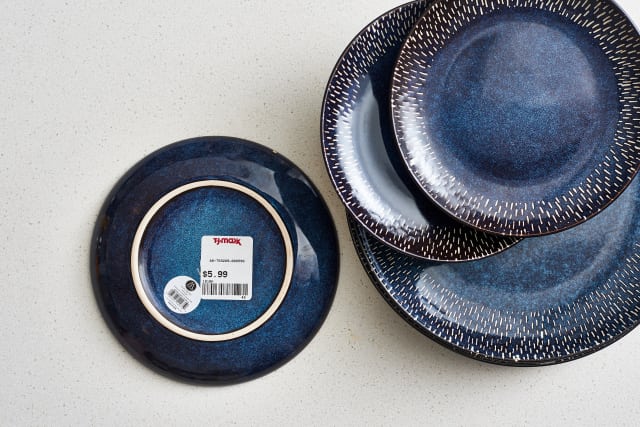


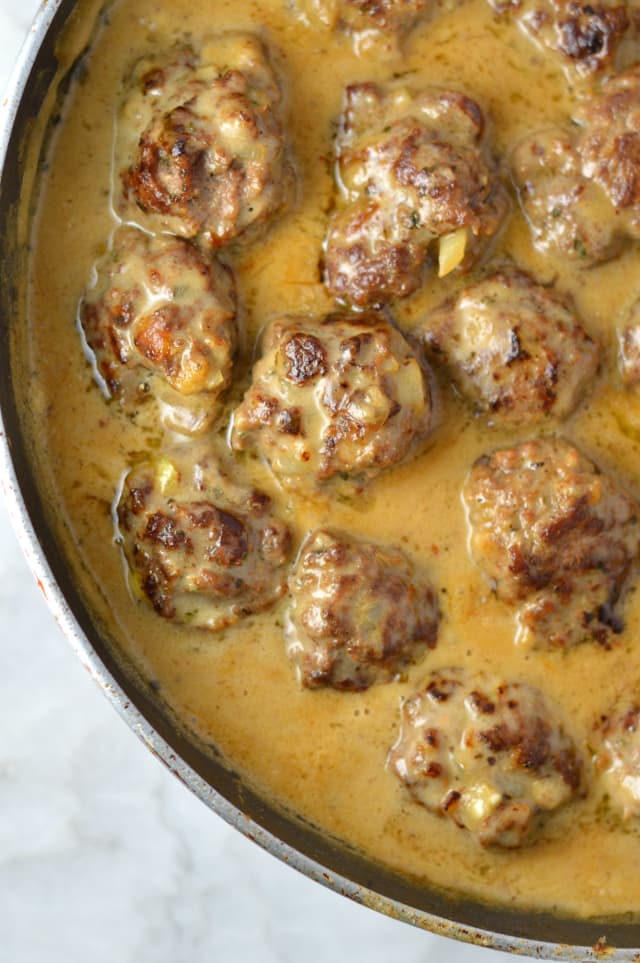





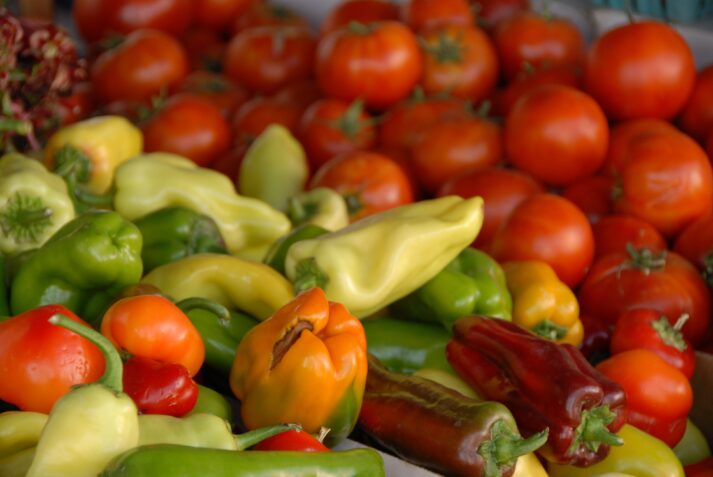





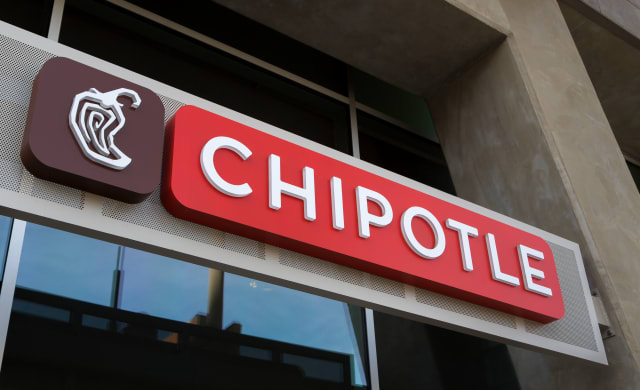

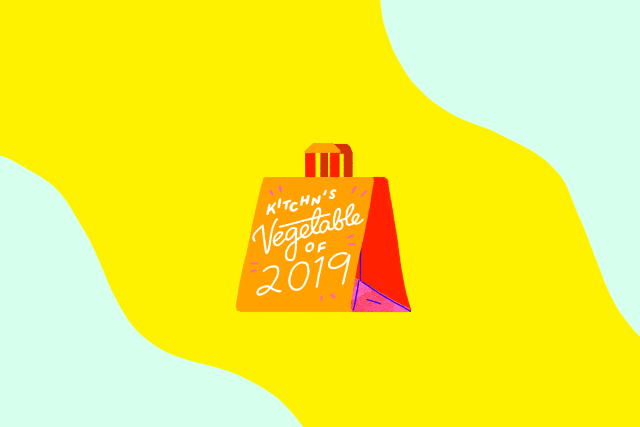
 For now classes are 6pm and 640pm at 2840 Wildwood st in the Boise Cloggers studio.
Book your class NOW!
click this ==>
For now classes are 6pm and 640pm at 2840 Wildwood st in the Boise Cloggers studio.
Book your class NOW!
click this ==>








